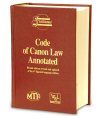Falling canonical dominoes: from matrimonial form to defection from the Church
The first domino in this line of anomalies is Canon 1108 by which "canonical form" (i.e., a wedding in the presence of an authorized cleric and two witnesses) is still required for valid Catholic marriage, even though the form part of canonical form has long since ceased to serve its original purpose. Today, the requirement of canonical form actually allows tens of thousands of Catholics each year to walk away from marriages that we would consider Protestants and non-Christians obliged to honor. (Long defense of that contentious assertion omitted.)
The second domino, Canon 1117 on "formal defection from the Church", was placed in the 1983 Code in an effort to hold at least some Catholics who pervasively act like non-Catholics to the marriages which they contract outside the Church (that is, in disregard for canonical form), lest they walk away from obligations that, according to sound natural law and sacramental principles, they were perfectly capable of and seemed willing to enter and by all appearances did enter. The problem with Canon 1117 (besides its not dealing directly with the real problem of obligatory canonical form) is that the canon suggests that Catholic identity can be turned-on and turned-off like a light switch. (Long explanation of that over-simplification omitted.)
The third domino tipped when the Pontifical Council for Legislative Texts, faced with the flaws of Canon 1117 (and perhaps still wishing to defend indirectly obligatory matrimonial form) issued in March/April 2006 a "notification" on the future implementation of Canon 1117, whereby some technical requirements for defection were imposed that far exceeded anything canon law had previously demanded in defection (and canonically parallel) cases, making it extremely unlikely that anyone who wanted to leave the Church would bother to comply with the steps. The notification thus effectively stops Canon 1117 from holding at least some Catholics to marriages that they certainly seemed to have entered while away from the Church. (Moderately long analysis of that interpretation found here.)
And the fourth domino is, it seems, the Polish bishops' 22-point guide to formal defection from the Church which, I am guessing, is an attempt to come to grips with the 2006 notification.
In short: If canonical form were not still required for matrimonial validity, Canon 1117 would not be needed; if a poorly-drafted Canon 1117 were not on the books, it would not have been open to the extreme interpretation it underwent in 2006; and if the excessive requirements for proving ecclesiastical defection had not become part of the law in 2006, episcopal conferences would not feel the need to publish lengthy how-to-leave-the-Church guides today.
In any case, while all this gets (hopefully) sorted out, keep in mind the following points: despite its Tridentine roots, canonical form was not universally required until well into the 20th century (1917 CIC 1094); within 50 short years of canonical form being universally required, reputable canonists were doubting the wisdom of retaining it (see below); if canonical form were not the sole way that Catholics had to exercise their right to marry, the bar for getting a 'church wedding' could be significantly raised and pastors would not be forced to witness so many weddings of persons who know little and care even less about the Faith; some defenses of retaining canonical form have been made not only by scholars (see below), but by the Congregation for the Doctrine of the Faith in 1994 (Letter concerning reception of holy Commuion, para 9); most importantly, canonical form is still the certain law of the Roman Church, and Catholic marriages attempted in violation of matrimonial form are invalid. Period. . . . for now anyway.
Salvo sapientiorum iudicio.
Some representative pre-conciliar (!) debates on canonical form include: J. Barry, "The Tridentine form of marriage: is the law unreasonable?" The Jurist 20 (1960) 159-178, response in W. Cahill, "Change the marriage law?" Homiletic and Pastoral Review 64 (1963-1964) 115-129; G. Gallen, "Proposal for a modification in the juridical form of marriage" The Australasian Catholic Record 38 (1961) 314-328; J. Abbo, "A change in the form of marriage" The Priest 19 (1963) 670-674; L. Orsy, "De forma canonica in matrimoniis mixtae religionis," Periodica 52 (1963) 320-347; and J. O'Connor, "Should the present canonical form be retained for the validity of marriage?" The Jurist 25 (1965) 66-81. There are many more studies on both sides of this issue in several languages.
Link to Polish memorandum original.









<< Home